BEING WITH NATURE – THE BENEFITS OF OUTDOOR PLAY
Playing together in nature is as much about us as it is about the child. Children get to celebrate and be themselves, while we are reminded of our inner child – the essence of who we are.” Nicolette Sowder
Finally, the sun is shining and the weather is sweet (in the words of Finley Quaye for those of you who are old enough to remember that summer song). Or at least it was when I wrote this! It feels like the perfect time to be outside. But it’s also a time where our lives have gone from being free and empty to (over) scheduled and busy. Children are back in the classroom, sitting down for much longer than they are used to (and perhaps should be) and parents are whizzing around to swimming lessons, birthday parties and work.
Despite being hugely important, outdoor play isn’t something that we schedule in as much as we could. The to do list is full (and then some!) and it can be hard to find the time, especially when it’s raining and it feels like it takes hours to get the children ready to leave the house.
We know that play is hugely important for children’s development across a range of areas (see my recent article for Edx Education for more about this – Returning to School: How to Support Children’s Emotional Well-Being Through Play But what does being outside add? This article focuses on the benefits of being in nature and playing outdoors. I hope that it motivates you to get outside with your children just that little bit more.
Humans are designed to connect with nature
“The world is mud-luscious and puddle-wonderful.” E. E. Cummings
Humans have an innate, biologically-driven need to seek connections with nature. This is known as biophilia, meaning “love of life” (Fromm, 1964[1]). Natural environments have been shown to reduce our stress, increase our attention span, improve our mood, affect our nervous, endocrine and immune systems and increase our Vitamin D levels. Some environments have been even been shown to cause electrochemical changes in the brain.
In natural environments we are more likely to enter a state of “effortless attention”. We are able to draw on all of our senses, reflect more easily and escape from the mental fatigue of our demanding lives (parenting often being a large part of those demands!). I think of being outside as a mindfulness exercise with natural stimuli engaging our attention and grounding us in the moment. Just viewing scenes of nature lights up parts of the brain associated with empathy[2] and green playgrounds have been found to be more restorative than artificial ones.
Parenting is not just about our children but about ourselves too; it’s well known that the better we look after ourselves the more available we are for our children. If we get enough time outdoors (with our children and without) everyone will reap the rewards. Before you go out and get lost in staring at the clouds going past or a stream bubbling by, remember to eye on small children!
Are we forgetting our need for nature?
“Restore balance. Most kids have technology, school and extracurricular activities covered. It’s time to add a pinch of adventure, a sprinkle of sunshine and a big handful of outdoor play.” Penny Whitehouse
Although the recommended time outside is at least an hour a day[3], children seem to be spending more time at home. I was pretty shocked when I read that many children spend up to 44 hours per week in front of a screen and less than 10 minutes a day playing outdoors[4]. And, for many, the pandemic hasn’t helped – An NSPCC poll of 1,036 UK parents with children aged 3 to 12, suggests that 65% said their children have played inside more since the start of the pandemic.
The benefits of outdoor play
Being in nature is not just about play but risk, restoration and regulation, bonding and belonging.
Outdoor play is a primary developmental experience for children, affording them opportunities they don’t have at home. In addition to the general benefits of being in nature, playing outside encourages the brain to mature faster than indoors (Burnett and Whittaker, 2005[5]). There is an array of benefits to playing outside – cognitive, physical, social, emotional and behavioural. It encourages children to develop self-awareness, a sense of independence, and an appreciation for the environment. Not surprisingly, it has been found that children who play outside more often have better language development and present as happier and more sociable children (Burdette and Whittaker, 20055).
Being outside can reduce sensory overload (just think about a trip to the park vs. soft play) and provides a space for children to explore and learn to take risks. Children move much more when they are outside and higher levels of outdoor play results in better motor-fitness, coordination and muscle strength. Outdoor play is It is less constrictive than being at home or school allowing decreased adult supervision – children have more control and learn to be more autonomous.
It has been found that the quality of play changes when children are outside (Gill, 2014[6]). It is well suited to free play . Where children choose and direct their own activity. Without toys which are designed with one purpose in mind, children are able to draw upon their creativity and imagination in different ways – a stick can be a spoon, magic wand, sword, fishing rod anything really, whereas a toy train is just a train! The choices are abundant and natural materials are less restrictive than toys at home – children are more able to get absorbed in what they are doing and the script is not already written for them.
Benefits
For me, one of the key benefits of being outside is that there are often other children there, of varying ages. This allows children to have role models who can scaffold play for them (also allowing you some much needed downtime). When I observe a group of children playing together on a beach (which I’m lucky enough to live near) I notice how there seems to be less competition between them, despite the odd argument over a bucket, and how their communication and negotiation skills are drawn upon and developed. It also means that your house doesn’t end up a complete mess at the end of a playdate!
A time to connect
“Every child needs a parent, grandparent or friend who will say Let’s go, it’s time for an adventure.” Penny Whitehouse
When we are outside, we are less preoccupied by the many demands that are placed on us. We have more space to engage with our children and join in with their imaginative worlds. It gives you time to enjoy each other, feel closer, work together and laugh – some of the things that go by the wayside when we are at home asking for the hundredth time for the screen to be turned off (to no avail!). Children have actually been found to be more open with their parents when in nature which is not surprising given all the benefits it has on the body and mind. Something to remember when you and your children all feeling frazzled – get outside!
You don’t have to join in with their play all the time – it’s fine let them be free and play with other children or alone. But being outside together is a good opportunity to engage in their world with them. I’ll never forget the fun I had with my son pretending that the rocks we were climbing were Tracey Island. I actually believed I was a Thunderbird for a while!
Try to show your child that you are interested in what they are doing. Add ideas if you want and let yourself go. It can be a great way to reignite your inner child!
How to get outdoors more
“There’s no such thing as bad weather, only unsuitable clothing.” Alfred Wainwright.
It’s not about going on day-long adventures all the time (although, if you can, try to schedule these in sometimes). There are some simple things you can do to increase the time your child plays outside.
- Ask them to help with outdoor tasks like weeding and watering the garden.
- Try to make bike rides or walks, even if it’s only for 10 minutes, a regular activity.
- Arrange play dates outside rather than in.
- Set up outdoor activities like scavenger hunts, mud kitchens or leaf collecting (which you can do some crafts with later if you have the energy).
- If you have a garden, safety-proof it (if you can) for when you are inside so they can be out exploring.
- Go out for picnics (this doesn’t have to be “out-out” if you have your own green space – just eat in your garden).
- Have a set of wet-weather clothes easily accessible and take healthy snacks and drinks with you when you go out.
- Write a list of things with your child of where you want to go and what you want to do such as puddle-jumping, shadow chasing, building a tower of rocks, tree climbing, stone skimming, hide-and-seek outside…the possibilities are endless.
- Model how much fun playing outside can be and how fascinating nature is.
Try not to not worry that fitting in outdoor play. Just feels like you are adding more to the things you already have to do. You can always integrate it into short journeys, stopping at a park on the way back or walking to school (if possible). Once it becomes a habit it won’t feel like a chore, just part of your daily routine.
Nature-based approaches
“When it comes to concentration capacity, the children within outdoor Swedish pre-schools are more than twice as focused as children within a normal pre-school. Their motor skills are better, they are less frustrated, restless and sick.” Patrick Grahn, National Agriculture University of Sweden.
The responsibility to get children outside doesn’t just lie with parents. Thankfully, nature-based approaches are becoming more common in educational and therapeutic settings. For me, having to work outside through lockdown made me realise the benefits of being outdoors; I’m continuing to see some of my clients on the beach and in the woods. I think we all enjoy this more than a stuffy clinic space.
Sweden, Finland and Norway have led the way to promote the importance of the outdoors for children. Highlighting the long-term positive impact it has on children’s well-being and academic results. Schools who are using nature more within their curriculum. Are reporting better attainment, enhanced attention, increased engagement and enthusiasm and improved behaviour. (There is lots of interesting information about this on www.childrenandnature.org).
Outdoor approaches are ideally suited to Early Years settings and should. In my opinion, play a key role in the Early Years curriculum. The abundance of natural resources can be used for open-ended play. But also for developing literacy and mathematical skills in a fun way. Invitations to learn are waiting to be explored in nature – no worksheet or tuff tray needed! If positive habits are formed in their early years, children will be able to apply these learning styles throughout their lives.
I’m sitting here writing this as my children have gone for a bike ride in the woods with their dad. I think I may just go and join them!
Happy exploring everyone…

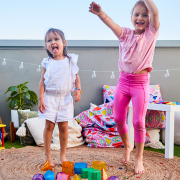 edx education
edx education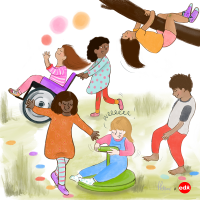
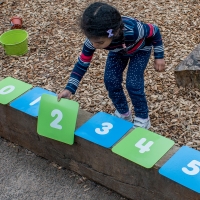
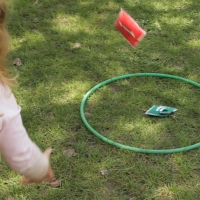
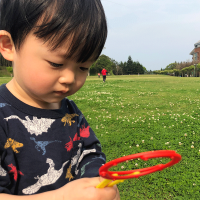

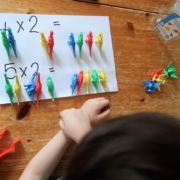 Edx Education
Edx Education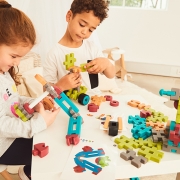 Edx Education
Edx Education

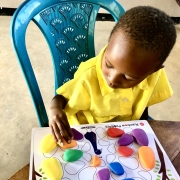
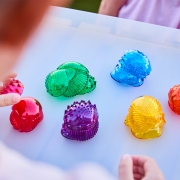 Edx education
Edx education Edx Education
Edx Education